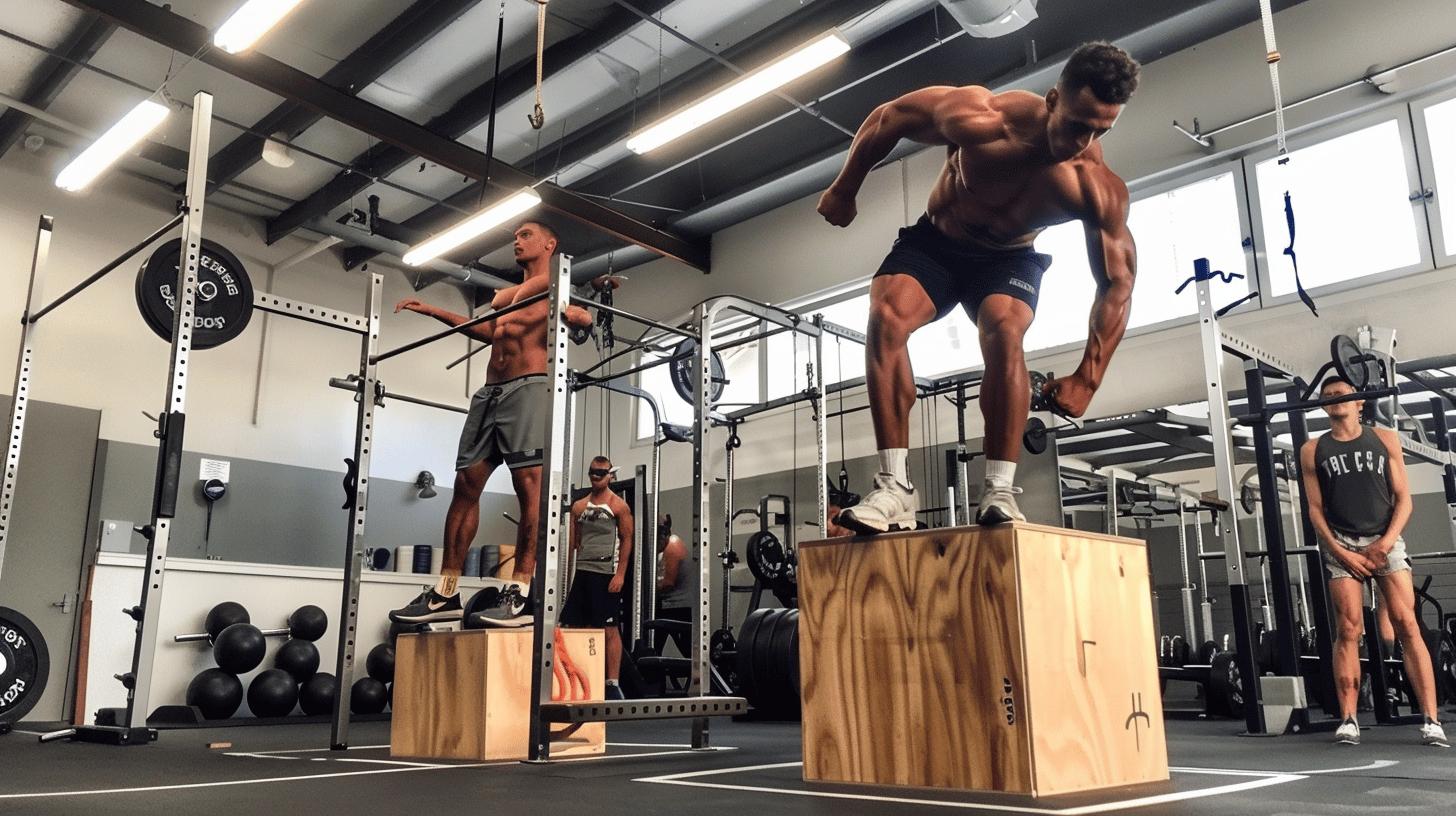Do you know the real difference between strength and power? While many use these terms interchangeably, they represent distinct attributes crucial to physical training. In this article, Leonardo Siton Marketing demystifies the concepts of strength and power. Learn how to harness both effectively to maximize performance and achieve your fitness goals. Ready to distinguish between muscle strength and muscle power and discover which aligns better with your needs? Let’s dive into the specifics and clear up any confusion.
Defining Strength and Power
Strength refers to the maximum force a muscle can produce. It is typically measured by the maximum weight an individual can lift for one repetition, known as the one-repetition maximum (1RM). Strength training focuses on increasing this maximum force through exercises such as weightlifting, where the goal is to lift progressively heavier weights. This type of training enhances muscle size, endurance, and overall physical capacity, making it essential for both daily activities and athletic performance.
Power, on the other hand, is the ability to apply force quickly. It combines both strength and speed, emphasizing the rate at which force is generated. Power training typically involves explosive movements that require lifting moderate weights at high speeds. Exercises like plyometrics, Olympic lifts, and sprinting are designed to improve power. This type of training is crucial for activities that demand quick, powerful movements, such as jumping, sprinting, and various sports that require rapid bursts of energy.
Key differences between strength and power:
- Measurement: Strength is measured by the maximum weight lifted (1RM), while power is measured by the speed of performing a movement and the force applied over time.
- Training Focus: Strength training focuses on increasing the maximum force muscles can produce, whereas power training emphasizes the speed and explosiveness of movements.
- Exercise Types: Strength exercises include heavy weightlifting with fewer repetitions; power exercises involve explosive movements with moderate weights or bodyweight.
- Physical Benefits: Strength training enhances muscle size and endurance; power training improves agility and the ability to perform quick, explosive actions.
- Application: Strength is crucial for daily tasks and overall physical capacity, while power is essential for sports and activities requiring rapid force application.
How Strength and Power are Measured
Strength is typically measured by the maximum weight an individual can lift in a single repetition, known as the one-repetition maximum (1RM). This metric provides a clear indication of the maximum force that a muscle or group of muscles can produce. For example, if someone can lift 100 kg in a single bench press, their 1RM for that exercise is 100 kg. This measure is commonly used to assess progress in strength training programs.
Power, on the other hand, is measured by the speed at which a movement is performed combined with the amount of force applied. This is often quantified through exercises that involve explosive actions, such as vertical jumps or sprints, where both the velocity and the force of the movement are recorded. The goal is to generate maximum force in the shortest possible time. For instance, in a vertical jump test, the height achieved can be used to calculate the power output of the leg muscles.
Comparing the two measurement methods highlights their distinct focuses. Strength measurement centers on the maximum force output, quantified by the heaviest weight lifted in a single effort. In contrast, power measurement considers both the force and the speed of the movement, aiming to evaluate the ability to perform fast, forceful actions. While strength is crucial for tasks requiring significant force, power is essential for activities demanding rapid and explosive movements.
Examples of Strength and Power Exercises

Strength exercises are designed to increase the maximum force that muscles can produce, often through heavy weightlifting with fewer repetitions. Common strength exercises include squats, deadlifts, and bench presses. These exercises focus on lifting progressively heavier weights to build muscle mass and improve overall strength. Squats target the lower body muscles, particularly the quadriceps and glutes. Deadlifts work the entire posterior chain, including the hamstrings, glutes, and lower back. Bench presses primarily target the chest, shoulders, and triceps. Each of these exercises is performed with a focus on controlled, slow movements to maximize muscle engagement and force production.
Power exercises, in contrast, emphasize the speed and explosiveness of movements, often involving lighter weights or bodyweight. Examples of power exercises include plyometrics, Olympic lifts, and sprinting. Plyometric exercises, such as box jumps and clap push-ups, involve rapid, explosive movements that develop fast-twitch muscle fibers. Olympic lifts, like the clean and jerk and snatch, require lifting weights quickly and with precision to train both strength and speed. Sprinting focuses on generating maximum force in the shortest amount of time, enhancing the ability to perform quick, powerful actions. These exercises are crucial for athletes who need to perform rapid bursts of energy in their sports.
Examples of strength and power exercises that can be done at home:
- Strength Exercises:
- Push-ups
- Bodyweight squats
- Resistance band rows
- Power Exercises:
- Jump squats
- Plyometric push-ups
- High knees
- Burpees
Benefits of Strength Training
Strength training offers numerous advantages that extend beyond merely increasing muscle mass. One of the primary benefits is the improvement of muscle size, endurance, and overall physical capacity. Engaging in regular strength training exercises helps in hypertrophy, which is the increase in muscle size through the growth of muscle fibers. Additionally, it enhances muscular endurance, allowing individuals to perform physical activities for longer periods without fatigue. Overall physical capacity is also improved, making everyday tasks easier and reducing the risk of injuries.
In the realm of sports, strength training is crucial for athletes. Enhanced muscle strength translates to better performance in various activities, including running, jumping, and throwing. For instance, a football player with increased leg strength will likely have a more powerful kick, while a basketball player with stronger upper body muscles can shoot with greater force. Strength training also aids in injury prevention by strengthening the muscles, tendons, and ligaments, providing better support for joints and reducing the likelihood of strains and sprains.
Beyond athletic performance, strength training is essential for daily life. It enhances stability and balance, which are critical for preventing falls and maintaining mobility as one ages. Tasks such as lifting heavy objects, climbing stairs, or even carrying groceries become more manageable with increased strength. By incorporating strength training into a regular fitness regimen, individuals can significantly improve their quality of life, ensuring they remain active and independent for longer.
Benefits of Power Training
Power training is pivotal in enhancing athletic performance. It focuses on the ability to generate maximum force in the shortest possible time, which is crucial for sports that require explosive actions. Athletes who engage in power training can improve their speed, strength, and overall performance. For instance, sprinters benefit from increased leg power, allowing them to accelerate more rapidly. Similarly, basketball players can jump higher and react faster on the court. The combination of strength and speed that power training develops is indispensable for achieving peak athletic performance.
Agility is another significant benefit of power training. Exercises that enhance power often involve multidirectional movements, which improve an athlete's ability to change direction quickly and efficiently. This is essential in sports like football, where players need to dodge opponents and make swift, strategic movements. Enhanced agility not only boosts performance but also reduces the risk of injuries by improving coordination and balance. Agility drills, plyometrics, and explosive strength exercises are common components of a power training regimen aimed at increasing an athlete's quickness and fluidity in motion.
Sports and activities that benefit from power training:
- Sprinting
- Basketball
- Football
- Tennis
- Volleyball
Choosing Between Strength and Power Training

Choosing between strength and power training largely depends on individual fitness goals and the specific demands of the sport or activity. If the primary goal is to increase muscle mass and overall physical capacity, strength training is the ideal choice. This type of training involves lifting heavier weights at slower speeds, focusing on the maximum force a muscle can produce. On the other hand, if the objective is to enhance the ability to perform explosive movements quickly, power training is more suitable. Power training combines strength with speed by using moderate weights and higher speeds, making it essential for activities that require rapid bursts of energy.
For those aiming to build muscle hypertrophy, strength training is beneficial as it focuses on lifting heavier weights, which stimulates muscle growth. Athletes involved in sports like weightlifting, football, or bodybuilding often prioritize strength training to improve their performance. Conversely, individuals looking to improve their speed and agility, such as sprinters, basketball players, or tennis players, should incorporate power training. This type of training enhances the ability to generate force quickly, which is crucial for sports that demand quick, explosive actions. Understanding these distinctions can help in designing a fitness program that aligns with personal goals and the physical fitness components required for specific activities.
| Aspect | Strength Training | Power Training |
|———————–|—————————————–|—————————————|
| Weight | Heavier weights | Moderate weights |
| Speed | Slower speeds | Higher speeds |
| Primary Goal | Increase muscle mass and force | Enhance speed and explosiveness |
| Key Exercises | Squats, deadlifts, bench presses | Plyometrics, Olympic lifts, sprints |
| Suitable For | Bodybuilding, weightlifting, football | Sprinting, basketball, tennis |
Final Words
In the action of understanding the difference between strength and power, this blog post covers comprehensive definitions, measurement methods, and practical exercises tailored for each.
Clear definitions and measurements set the groundwork for targeted training, whether aiming for maximum force or swift, powerful movements. The benefits of both training types are substantial, enhancing physical capabilities in various contexts.
Making informed choices between strength and power training hinges on individual fitness goals. Embracing the nuances between strength and power can optimise training outcomes and overall athletic performance.
FAQ
Difference between power and strength with example
Strength is the maximum force a muscle can exert, measured by lifting heavy weights. Power combines strength and speed, essential for explosive movements like sprinting. For example, bench pressing (strength) vs. Olympic lifts (power).
Difference between strength and power for athletes
Strength focuses on heavy lifting to increase muscle force, critical for sports like powerlifting. Power combines strength and speed, vital for sports requiring quick, explosive movements like basketball and sprinting.
Difference between strength and power exercises
Strength exercises involve lifting heavy weights with fewer repetitions, such as squats or deadlifts. Power exercises involve explosive movements with lighter weights, such as plyometrics or Olympic lifts.
Difference between strength and power in the Bible
Biblical references to strength often imply inner fortitude and endurance, while power denotes the ability to enact significant change or perform miracles.
Power vs strength philosophy
Strength philosophy focuses on building maximum muscle force, while power philosophy combines speed and strength, aiming for efficient, explosive movements.
Difference between strength and stamina
Strength measures the maximum force a muscle can produce, whereas stamina refers to the ability to sustain prolonged physical or mental effort.
Strength vs power vs endurance
Strength: The maximum force produced by a muscle.
Power: The speed at which this force is exerted.
Endurance: The ability to sustain activities over time.
Power training exercises
Examples include plyometrics, Olympic lifts, sprints, and explosive jumps. These exercises improve the speed and application of force.
Is it better to have strength or power?
It depends on your goals. Strength is crucial for lifting heavy objects, while power is essential for quick, explosive movements.
Which is greater strength or power?
Strength and power serve different purposes. Strength is necessary for maximal force, while power is critical for movements requiring speed and force.
Does strength mean power?
Strength does not necessarily mean power. Strength is the maximum force a muscle can produce, while power combines strength and speed for explosive movements.
What is the difference between strength, power, and force?
Strength is the maximum force a muscle can produce. Power is the combination of strength and speed. Force is the influence that causes an object to change speed or direction.

